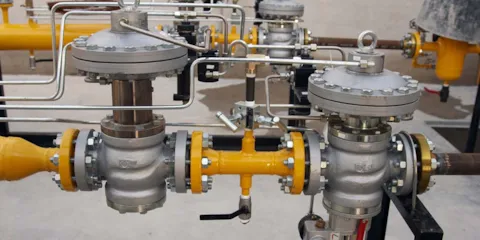Regulator Station Modelling – Effective Risk and Overpressurization Management
Written by Troy Weyant, Product Manager – Synergi Pipeline
Greater industry attention and focus are placed on assessing and mitigating risk of failure of pressure regulating stations. As a result of incidents, gas distribution operators are taking actions on numerous fronts, with one of them being - Proactive measures to assess the risk of overpressure.
In the US, for example, the “Protecting Our Infrastructure of Pipelines and Enhancing Safety (PIPES) Act of 2020” was signed on December 27, 2020. Portions of this Act were in direct response to the Merrimack Valley incident. Per the Pipes Act 2020, operators are directed to:
- Assess and upgrade as appropriate, each district regulator station of the operator to ensure that risks are minimized of exceeding maximum allowable operating pressure
- Assess the risks that could lead to or result from the operation of a low-pressure distribution system at a pressure that makes the operation of any connected and properly adjusted low-pressure gas burning equipment unsafe
- The statute also requires the Operations and Maintenance Plan to contain written procedures for responding to overpressure indications
What is over-pressurization and why is it a risk?
In simplistic terms, downstream distribution networks are designed to operate at low pressures. If the pressure in the system exceeds that of the design, failures could occur. Those pressures are controlled by regulator stations and devices. If a component in a station fails open without sufficient protective devices, then the downstream system could be over-pressurized resulting in leaks, ruptures, and equipment failures with potentially catastrophic loss of life and/or injury.
Although an overpressurization event is generally considered to affect pipeline risk and integrity, hydraulic analysis can make a significant contribution in preparing for it. By assessing the impact and magnitude of overpressurization events, these results can be fed into a risk analysis tool for further evaluation. The pairing of risk analysis and hydraulic products creates a unique solution with increased value for both system planners and integrity engineers.
Maximum value from regulator station risk modelling
Pressure regulation stations are complex to risk assess as they can result in both localized and remote impacts across a gas network. Unfortunately, most risk management systems and processes today exhibit several limitations which prevent accurate, complete, and consistent assessment of risk, not only within a single asset class but more broadly across multiple asset classes which, together comprise a company’s portfolio. For optimal results, ensure that the regulator station risk model your company invests in, is comprehensive and is built to account for characteristics such as:
- Leaks as well as Overpressures and Outages are covered
- Reliability failures impact the downstream network and are not only localized at the regulator station
- Reliability risks may be greater than risks of leaks/ruptures
- Multiple station types are assessed such as district regulators, secondary regulators, etc. with varying types and configurations of regulators and other equipment
- Site-specific differences are accounted for, e.g above and below grade, vehicle barriers, age, flow, etc
- Detailed equipment data in the system of record used for risk analysis
How can utilities be prepared?
Companies need to have a clear understanding of the risk to prioritize efforts. When you have tens or hundreds of regulator stations how do you know which ones to work on first?
Additionally, how do utilities assess the risk liability of stations vs other risks in their system? Companies have a finite budget to replace and repair assets and understanding the risk and costs across all assets ensures the investments are made where the risks are greatest.
When assessing your business processes and evaluating risk models and integrity management software, you should also consider the following which help to support a broader and more consistent enterprise management solution.
- Open and flexible to adapt to changing regulations and company requirements
- Empowers users to update models and run assessments and scenarios as needed
- Risk models and platforms provide a flexible modelling framework capable of assessing multiple asset types
- Probabilistic Risk Assessment (PRA) models inherently address the uncertainty associated with missing data making them the ideal choice for use with enterprise assets where incomplete data sets and records are common
DNV’s Regulator Station Impact Assessment package comprises of Overpressure Analysis and Outage Analysis applications to understand the downstream consequences of a planned as well unplanned event. When these results are used in conjunction with DNV’s Synergi Pipeline Regulator Station Risk model it provides a comprehensive overview of not just the probability of failure, but of the downstream consequence. When used in conjunction with DNV’s other probabilistic models, it provides visibility of the regulator station risk liability vs other asset classes such as Mains, Services etc.
Why should a company invest in these products?
- Safety
- Compliance
- Investment planning
Consequences & liability for health and safety, property, and business costs of an overpressure incident can run into the millions or billions of dollars.
Being proactive in understanding the risk across your system is becoming more and more critical as utilities look to prioritize capital investment spending. These solutions help utilities focus their efforts in the most effective areas in the most efficient manner, optimizing money spent and ensuring safety.
If you would like to find out more about Over pressurization and Regulator Station Risk Management based on DNV’s PRA Risk models and Synergi Pipeline platform, please do not hesitate to contact us.
6/24/2022 9:31:40 AM
